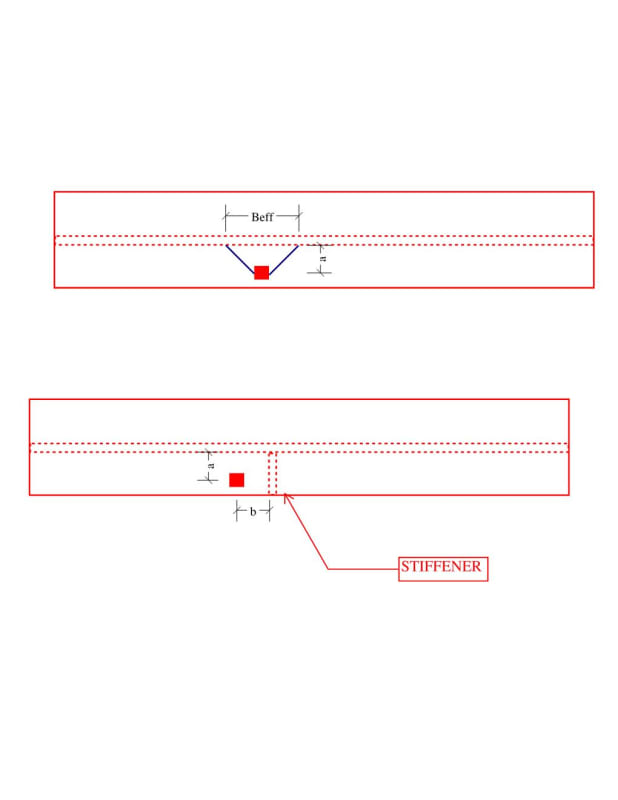BAGW
Structural
- Jul 15, 2015
- 392
Hi,
Attached is the image below showing two scenarios. The first one is applying point load on the flange and the Beff that can be used for capacity calculation.
Mu = P x a
S = beff x t^2 / 6
Mc = phi x fy x S
Second image is the scenario with stiffener added. How do we calculate the capacity for such cases?

Thanks
Attached is the image below showing two scenarios. The first one is applying point load on the flange and the Beff that can be used for capacity calculation.
Mu = P x a
S = beff x t^2 / 6
Mc = phi x fy x S
Second image is the scenario with stiffener added. How do we calculate the capacity for such cases?

Thanks
